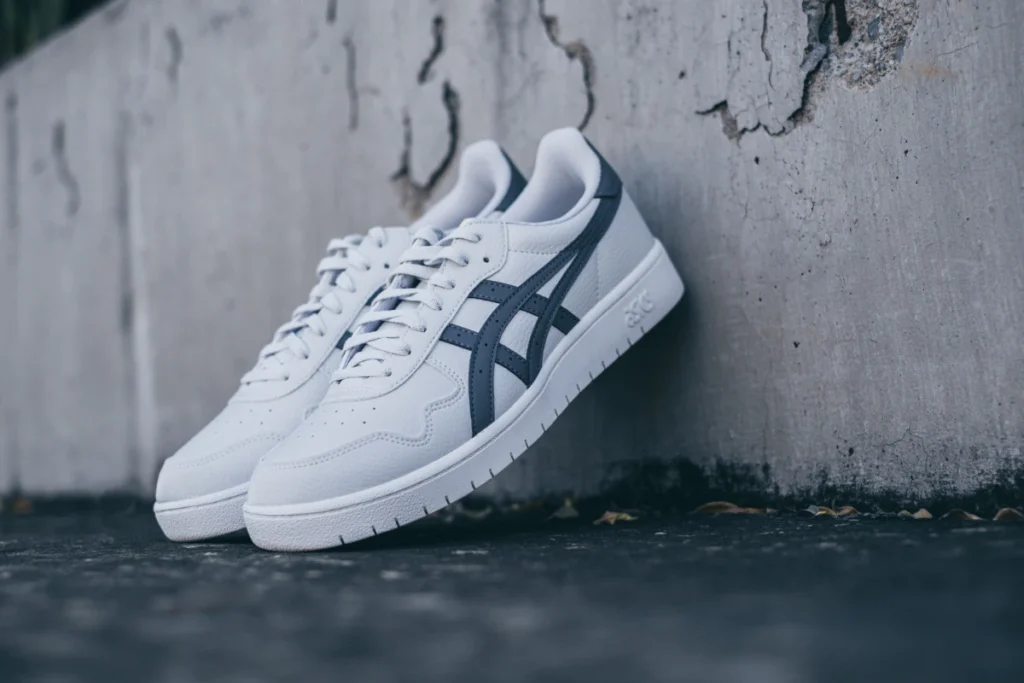Onitsuka Tiger is one of the world’s most legendary sneaker brands, with more than 70 years of history under its belt. With its Japanese roots, the brand has always been known for its focus on innovation and society, capturing the hearts of millions of people all over the world. The Onitsuka Tiger marketing strategy played a crucial role in its journey, helping it navigate challenges and achieve a remarkable comeback, much like the legendary phoenix rising from the ashes.
A subsidiary of ASICS (or “A6” for pure ultra-Japanese authenticity), Onitsuka Tiger has established a brand that’s all about heritage and the latest sneaker technology. Let’s discover the brand’s history, its successes and failures, and the lessons we can learn from its runaway success.
The Origins of Onitsuka Tiger
Onitsuka Tiger was established in 1949 by Kihachiro Onitsuka in Hyogo Prefecture, Japan, post-World War II. His vision? To motivate Japanese youth to live healthier lives through exercise, believing that fitness would help improve national morale following the defeat in World War II.

Japan was occupied by America then, and there was a huge American cultural presence everywhere. Western powers were overwhelming Japanese society, from jazz music to Hollywood films. Even America promoted small businesses before giant conglomerates, allowing companies like Onitsuka Tiger to make headway.
It was at this point that Onitsuka came up with his first big innovation—the “octopus shoe.” Having seen the suckers on an octopus’s arms while having a salad, he created basketball shoes that stuck better, addressing one of the biggest problems for athletes. The outcome was Japan’s first domestic basketball shoe, which hit the market in 1951.
Growing Influence in Sports
Onitsuka Tiger was an instant success in Japan. In 1953, the company launched the Marathon Tabi, and in 1956, Onitsuka was officially recognized as Japan’s supplier of shoes to the Olympic basketball team. The brand peaked in 1957 when Ethiopian marathon great Abebe Bikila, who had become famous for running barefoot, wore Onitsuka Tiger shoes.
But the true turning point was in 1964 when Onitsuka Tiger entered the American market through Blue Ribbon Sports—now more commonly referred to by its subsequent, more popular name, Nike. This collaboration resulted in the development of one of the all-time great shoes, the Cortez. Sadly, a court battle dissolved the collaboration in 1968, with Nike being allowed to retain the Cortez name and Onitsuka Tiger being forced to rename its version the “Corsair.”
Despite this setback, Onitsuka Tiger remained a highly regarded brand, even making waves in Hollywood. The Mexico 66 classic shoe became forever associated with Bruce Lee, even though he wore the Onitsuka Tiger Tai Chi in Game of Death.
The Birth of ASICS and Onitsuka Tiger’s Vanishing
Onitsuka Tiger also collaborated with GTO and JELENK in 1977 to create the new firm ASICS, dedicated to high-performance running shoes. ASICS introduced its mythical GEL technology, which gave rise to models such as Kayano and Nimbus. The Gel-Lyte line also achieved cult status with collaborations with brands such as KITH and Vivienne Westwood.
But the Onitsuka Tiger brand lost its direction and seemed to vanish for decades. It wasn’t until 2002 that the brand regained its popularity with the revival of its retro silhouettes.
Onitsuka Tiger Marketing Strategy
The dawn of the 2000s saw a resurgence of old-school sneakers, and Onitsuka Tiger benefited from the revival. Hollywood played a role in this comeback when Kill Bill featured Uma Thurman sporting the Mexico 66 in yellow.

This momentum led to the launch of Nippon Made, a high-end line honoring Japan’s craftsmanship. Onitsuka Tiger expanded by 20% by 2017 as it positioned itself as one of the greatest sneaker brands, with collaborations ranging from BAPE to Street Fighter’s Chun-Li.
Lessons from Onitsuka Tiger’s Success
So, what lessons can we learn from Onitsuka Tiger marketing strategy?
- Innovation and Commitment Pay Off – The secret to the brand’s success is that Kihachiro Onitsuka cared enough to listen and innovate. His octopus-inspired basketball shoe shattered conventions.
- Start Small, Then Expand – Onitsuka Tiger began by targeting Japanese high schools before expanding worldwide. To this day, the brand still follows the Onitsuka Tiger Commercial Code, opting for niche targeting over mass expansion.
- You Don’t Need to Be the Largest to Be Respected – While Onitsuka Tiger is smaller than Nike or Adidas, its reputation remains strong because of its commitment to high-quality footwear.
In the end, Onitsuka Tiger demonstrates that a strong vision, determination, and perseverance can lead to lasting success. The company wasn’t merely anticipating a resurgence—it was waiting for the opportune moment to come back as a beacon of light, just as it did around 70 years ago.
The Onitsuka Tiger marketing strategy focuses on heritage-driven modern designs, strategic collaborations, limited-edition releases, and flagship stores worldwide, reinforcing its global presence and premium brand identity.
The brand stands out for its fusion of Japanese craftsmanship, innovative sneaker technology, and timeless retro designs, making it a cultural and fashion icon worldwide.
In business, Tiger Global Strategy focuses on aggressive expansion, strategic partnerships, and brand adaptability to maintain a competitive edge in the evolving global sneaker market.



